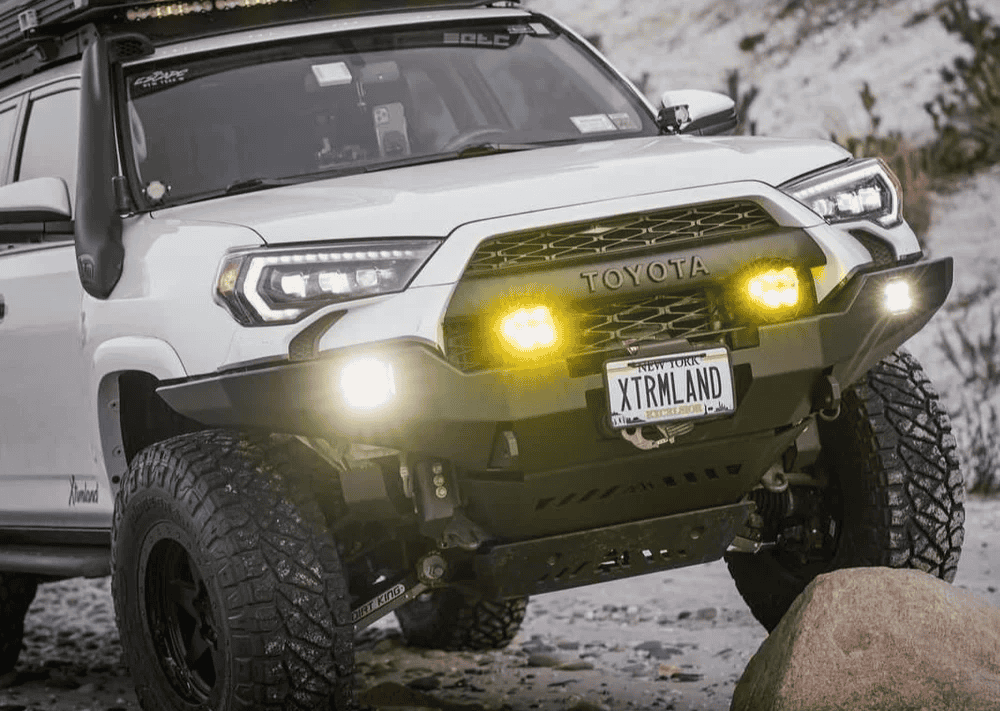Overland Vehicles

A dual battery system separates engine starting duties from house power. The starter battery remains dedicated to cranking the engine, while an auxiliary battery feeds fridges, lights, water pumps, fans, radios, and an inverter. With the loads split, you can camp for days and still start the vehicle with confidence. The two batteries connect through a charging device that refills the auxiliary bank while you drive and, in many systems, from solar or shore power.
Correctly designed setups protect the alternator and both batteries. The charging device should match the chemistry of the auxiliary battery to prevent undercharging or overcharging. A smart layout adds fusing close to each battery, proper cable sizing, and solid grounding to maintain low resistance and keep heat under control.
The starter battery wants short bursts of high current. The auxiliary bank wants steady, controlled charging and deep discharge capability. This different behavior is why a dedicated charger or isolator sits between them. When the engine is off, the house battery runs your accessories. When the engine is on, the charger replenishes the house battery without letting house loads pull from the starter.
Common choices include AGM, flooded lead acid, and lithium iron phosphate. AGM is sealed and simple to manage. Flooded batteries are budget friendly but require ventilation and maintenance. Lithium iron phosphate offers high usable capacity, fast charging, and low weight, but it must be charged with a profile that respects voltage setpoints and low temperature limits. Match the charger to the battery to maximize lifespan.
A dependable system uses the right parts in the right places. At minimum, plan for an auxiliary battery, a DC to DC charger or a voltage sensitive isolator, main fuses or breakers near both batteries, appropriately sized cable, quality lugs, protective loom, and a clean ground strategy. Add a busbar and a fuse block to distribute power to accessories without clutter.
Cable size depends on current and run length. Longer runs need thicker cable to control voltage drop and heat. Every positive cable leaving a battery should be fused within inches of the post to prevent a short from turning into a fire. Use abrasion protection, grommets through bulkheads, and secure mounting to keep movement and chafe in check.
Isolators connect batteries when the alternator is charging and separate them when the engine is off. They are simple and effective with similar chemistries. DC to DC chargers regulate current and voltage, delivering a charge profile suited to AGM or lithium iron phosphate. They also shine on modern vehicles with smart alternators, maintaining proper charging even when alternator output varies.
Calculate current draw for worst case scenarios such as engine off inverter use or high output charging. Use marine grade tinned copper wire sized for both amperage and distance. Install main fuses or breakers close to each battery. Protect every circuit with correct fuses at the distribution block. Secure cables with clamps, avoid sharp bends, and keep wires away from exhaust and moving parts.
Batteries are heavy, so mount the auxiliary bank in a rigid tray that anchors to structure. Maintain ventilation around chargers and inverters. Keep service items visible and reachable. A tidy layout with labeled circuits speeds diagnostics on the trail and helps future upgrades.
A methodical install starts with a load audit. List every device, note run time, and total daily watt hours. Size the auxiliary bank to cover your use with a reserve for bad weather and cold nights. Choose a charger that can restore energy during typical drive time, and, if desired, add solar for static camps. Verify the plan on paper before turning a wrench.
When it is time to build, disconnect the negative terminals, mount hardware, crimp and heat shrink lugs, land grounds first, then route positives through fuses and breakers. Confirm polarity, torque all fasteners, and tidy the loom. Power up, check resting voltage, verify charge voltage at the auxiliary battery with the engine running, and then test each accessory circuit under load.
If you want this done right the first time, our team handles complete planning, parts selection, and integration into your rig. See how we outfit overland rigs for dependable power on every trip, or explore our tailored custom overland upfit options. Curious about our process and standards? Learn more at why choose OZK Customs.
We design and install auxiliary power systems that match your travel style. From clean battery trays and protected cable runs to DC to DC charging tuned to your chemistry, we deliver quiet, reliable energy for fridges, heaters, and workstations. Share your goals, and we will map the system, build it in our Fayetteville Arkansas shop, and walk you through every switch before you roll out.
Ready for dependable off grid power that just works? Our team designs and installs complete auxiliary power systems with clean routing, tested protection, and pro grade integration. Tell us how you travel and what you need to run, then we will map the right system and build it in our Fayetteville Arkansas shop. Share your build goals and get a clear install plan today.
ADDRESS:
6159 E Huntsville Rd, Fayetteville, AR 72701
PHONE:
(479) 326-9200
EMAIL:
info@ozkvans.com